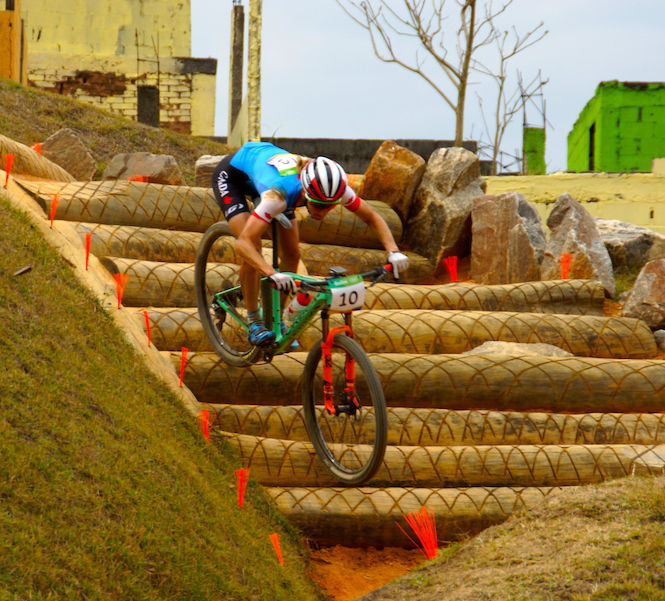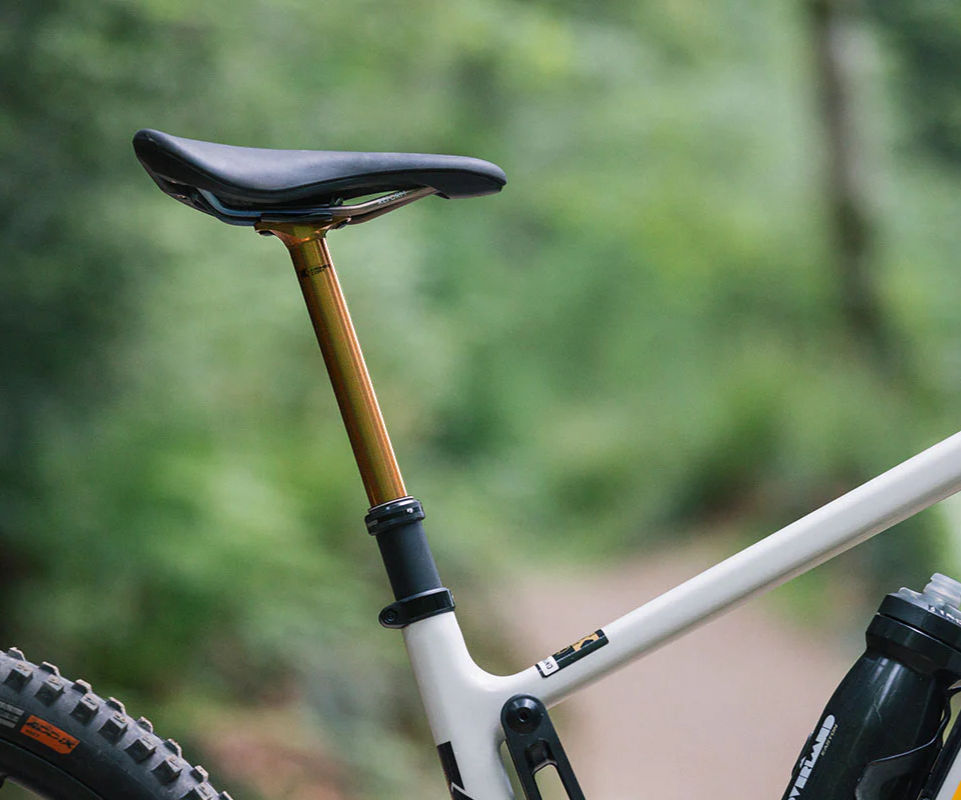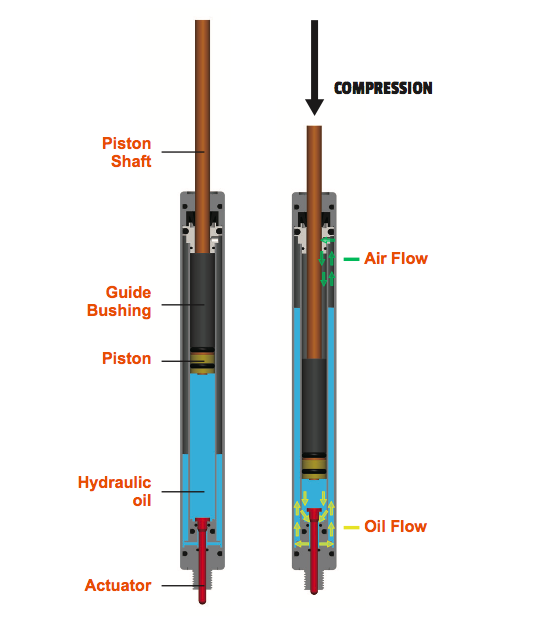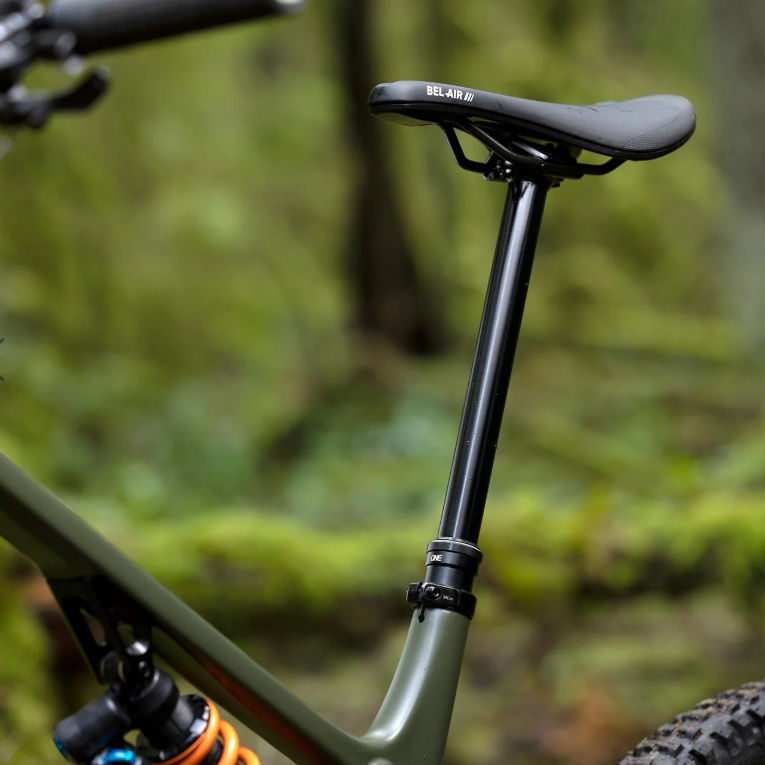Dropper Posts: The Game-Changer That Turned Mountain Biking Upside Down (In the Best Way)
- Kirby Wisdom
- Aug 5
- 4 min read
Updated: Aug 31
Once upon a time, mountain bikers were stuck with their seat height like they were married to it – for better or worse, in sickness and in health, until mechanical failure do us part. Then came the dropper post, and suddenly everything changed. It's like someone finally invented the remote control for your bike's geometry, and we never looked back.
The Dark Ages of Fixed Seat Heights

Picture this: you're climbing a gnarly technical section, and your saddle height is perfect – you're spinning efficiently, transferring power like a diesel engine. Then you crest the top and face a descent that looks like it was designed by someone with serious trust issues. Your options? Stop, get off your bike, and manually lower your seat like some kind of troglodyte, or send it with your seat jammed into your ribcage like an uncomfortable reminder of poor life choices.
Most riders chose option two, which led to a generation of mountain bikers who looked like they were riding unicycles down mountains – perched precariously on their saddles, fighting for control while their center of gravity did its best impression of a drunk giraffe.
Enter the Dropper Post: The Hero We Didn't Know We Needed

The dropper post wasn't born yesterday – early versions appeared in the late 1980s, but they were about as reliable as weather forecasts and twice as expensive. The real revolution came in the 2000s when companies like RockShox, Fox, and others figured out how to make them actually work consistently. Suddenly, riders could drop their saddle with the push of a button and transform from efficient climbing machine to low-slung descending demon in seconds.
It was like discovering fire, but for mountain biking. Riders who had been white-knuckling descents suddenly found themselves flowing down trails with confidence, their center of gravity lower than their expectations for finding parking at the trailhead.
What Exactly Does This Magic Wand Do?

A dropper post is essentially a telescoping seat post that you can raise and lower on the fly using a remote lever. Think of it as power steering for your riding position. When you're climbing, you want your saddle at full height for maximum pedaling efficiency. When you're descending, you want it out of the way so you can move your body around like a mountain biking contortionist.
The benefits are immediate and obvious: better bike handling, increased confidence on descents, smoother transitions between climbing and descending, and the ability to tackle technical terrain without your saddle trying to become an unwelcome third wheel in your relationship with gravity.
Choosing Your Dropper: It's More Complicated Than Your Coffee Order
Not all dropper posts are created equal, and choosing the right one involves more factors than deciding what to binge-watch next. Here's what you need to consider:
Travel Distance: Dropper posts come with different amounts of travel – typically ranging from 100mm to 200mm or more. More travel gives you more versatility, but you're limited by your frame's seat tube length and your inseam. It's like buying pants – you need the right size, or things get awkward quickly.

Actuation Method: Most modern droppers use either cable or hydraulic actuation. Cable systems are simpler and easier to maintain, like a reliable old truck. Hydraulic systems offer smoother, more consistent feel but require more specialized service – kind of like the difference between a manual transmission and an automatic.
Diameter and Length: Your frame dictates the diameter (30.9mm, 31.6mm, or 34.9mm typically), and your anatomy dictates the length. Get this wrong, and you'll either be riding a bike that doesn't fit or staring at an expensive paperweight.
Internal vs. External Routing: Some droppers route the cable internally through your frame, others externally. Internal looks cleaner but can be a nightmare to service. External is more accessible but looks like your bike has visible plumbing.
The Maintenance Reality Check
Here's what the marketing brochures don't emphasize: dropper posts need service just like your suspension components. They're complex mechanical systems with seals, fluids, and moving parts that wear out over time. Ignore maintenance, and your dropper will develop more issues than a reality TV star.
Common problems include sluggish return speed, posts that won't stay up, posts that won't go down, and that lovely grinding noise that sounds like your bike is chewing gravel. These aren't character quirks – they're cries for professional help.
The Shad Co. Dropper Post Service
Just like we're your suspension experts, we're also your dropper post specialists. We perform complete factory services on most major dropper post models – RockShox Reverb, Fox Transfer, OneUp, and more. We'll tear down your dropper, replace seals and fluids, fix any internal issues, and return it to you working smoother than your best dad jokes.
Regular service keeps your dropper reliable and extends its life significantly. It's the difference between a dropper that works when you need it and one that leaves you stuck in the wrong position at the worst possible moment – like being caught in climbing position on a gnarly descent, or worse, stuck in the down position for an entire climb.
The Bottom Line
The dropper post revolutionized mountain biking by solving a problem that riders didn't even realize was holding them back. It's not just a convenience feature – it's a game-changer that improves your riding, increases your confidence, and opens up terrain that was previously intimidating.
But like any sophisticated component, it needs proper care and professional service to keep working reliably. Don't wait until your dropper leaves you hanging (literally) – bring it to The Shad Co. for service before it becomes a problem. Because the only thing worse than not having a dropper post is having one that doesn't work when you need it most.




Comments